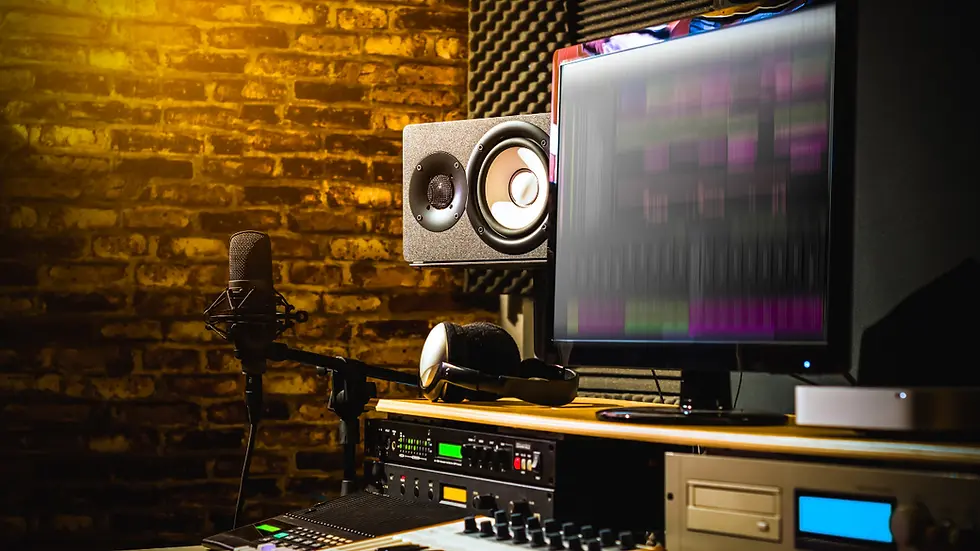Matching EQ in Music Production: Unify Your Mix
- Mark Georgiou

- Feb 26
- 3 min read

If your tracks are sounding a little too different from one another, matching EQ curves can be the secret sauce to pull your mix back together. We know that every mix has its unique challenges, and one of the most common is creating a cohesive sonic landscape when dealing with multiple sources. In today’s blog entry, we’ll explore what EQ matching is, why it matters, and how you can use it to elevate your productions.
What Is EQ Matching?
EQ matching is a technique used to align the tonal balance of different audio sources within your mix. When instruments or vocals are recorded in varying environments—or even when using different microphones—their frequency responses can differ significantly. This disparity can lead to a mix that sounds disjointed or unbalanced. By matching EQ curves, you’re essentially taking the frequency profile of a reference track and applying its characteristics to another source. The result? A more unified and professional-sounding mix.
Why Should You Match EQ?
1. Cohesion in Your Mix
When each element in your track has a similar tonal balance, they sit better together. This doesn’t mean every track should sound identical—rather, they should complement each other so that no one element feels out of place.
2. Correcting Sonic Disparities
Often, different recording setups, instruments, or vocal takes will have their own unique frequency imprint. EQ matching helps to mitigate these differences, ensuring that the mix doesn’t lose its overall clarity and balance.
3. Enhanced Clarity and Definition
A well-balanced mix allows each instrument to shine in its frequency range, making it easier for the listener to pick out individual elements without any part of the mix overpowering the others.
How to Get Started with EQ Matching
Step 1: Choose Your Reference
Select a track or a portion of a track that has the tonal balance you’re aiming for. This reference should embody the sound and clarity you want across your mix.
Step 2: Analyze the Frequency Spectrum
Using a spectrum analyzer, take a close look at the frequency distribution of both the reference and the target audio source. Identify areas where they differ.
Step 3: Apply the EQ Match
Many modern plugins offer a “match EQ” feature where the software automatically adjusts the target track’s EQ curve to mirror that of your reference. Alternatively, you can manually tweak your EQ settings while comparing the two spectra.
Step 4: Fine-Tune by Ear
While visual analysis is invaluable, trust your ears. Make subtle adjustments until the transition between different elements in your mix sounds seamless and natural.
Pro Tips for Successful EQ Matching
Don’t Overdo It: Aim for a balance. The goal is not to make everything sound identical, but rather to ensure consistency where it counts.
Reference in Context: Always make EQ adjustments while listening to the entire mix, not in isolation.
Experiment with Different References: Sometimes, a different reference track might yield a more pleasing result for certain elements of your mix.
Learn from the Pros: Many mixing engineers use EQ matching as part of their workflow. Observe how professionals apply these techniques to enhance clarity and balance.
Bringing It All Together
It's always important to achieve a sound that’s both unique and professionally polished. Whether you’re in a studio or mixing at home, the principles of EQ matching remain a powerful tool in your production arsenal.
If you’re ready to take your music production to the next level, try incorporating EQ matching into your workflow. And don’t forget to check out our Instagram for quick guides, tips, and behind-the-scenes looks at how we bring our mixes to life!
Plugin Suggestions For EQ Matching
FabFilter
FabFilter has an excellent tool for achieving precise EQ matching in your mixes. With its intuitive interface and powerful features, you can easily analyse the frequency spectrum of both your reference track and target source. The Match EQ feature in FabFilter Pro-Q 3 allows you to capture the frequency profile of your reference track and automatically apply it to your target audio. This makes it easy to match tonal balances, ensuring consistency across your mix. Plus, the real-time frequency analysis and detailed visualisation provide an accurate way to fine-tune your EQ adjustments, allowing you to make subtle, ear-pleasing changes that enhance cohesion and clarity in your production.





Comments